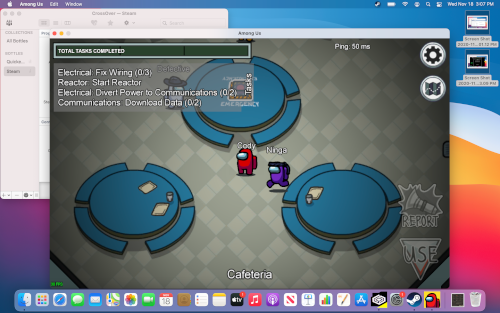

- #Windows for mac m1 how to#
- #Windows for mac m1 install#
- #Windows for mac m1 update#
- #Windows for mac m1 manual#
Guidance for how to configure the product in enterprise environments is available in Set preferences for Microsoft Defender for Endpoint on Mac.


How to configure Microsoft Defender for Endpoint on Mac To learn more, see Deploy updates for Microsoft Defender for Endpoint on Mac.
#Windows for mac m1 update#
To update Microsoft Defender for Endpoint on Mac, a program named Microsoft AutoUpdate (MAU) is used. Microsoft regularly publishes software updates to improve performance, security, and to deliver new features. How to update Microsoft Defender for Endpoint on Mac Once Microsoft Defender for Endpoint is installed, connectivity can be validated by running the following command in Terminal: mdatp connectivity test SIP is a built-in macOS security feature that prevents low-level tampering with the OS, and is enabled by default. We recommend that you keep System Integrity Protection (SIP) enabled on client devices. If a proxy or firewall is blocking anonymous traffic, make sure that anonymous traffic is permitted in the previously listed URLs. Web Proxy Autodiscovery Protocol (WPAD).Microsoft Defender for Endpoint can discover a proxy server by using the following discovery methods: Spreadsheet of specific DNS records for service locations, geographic locations, and OS.ĭownload the spreadsheet here: mdatp-urls.xlsx. You should ensure that there are no firewall or network filtering rules that would deny access to these URLs, or you may need to create an allow rule specifically for them. The following downloadable spreadsheet lists the services and their associated URLs that your network must be able to connect to. When adding exclusions, be mindful of common exclusion mistakes for Microsoft Defender Antivirus. When purchased via a CSP, it does not require Microsoft Volume Licensing offers listed. Microsoft Defender for Endpoint is also available for purchase from a Cloud Solution Provider (CSP). Microsoft Defender for Endpoint on Mac requires one of the following Microsoft Volume Licensing offers:Įligible licensed users may use Microsoft Defender for Endpoint on up to five concurrent devices. Support for macOS devices with M1 chip-based processors has been officially supported since version 101.40.84 of the agent.Īfter you've enabled the service, you may need to configure your network or firewall to allow outbound connections between it and your endpoints. 12 (Monterey), 11 (Big Sur), 10.15 (Catalina)īeta versions of macOS are not supported.If you are an existing customer upgrading from earlier versions of macOS, make sure to deploy the additional configuration profiles listed on New configuration profiles for macOS Catalina and newer versions of macOS. On macOS 11 (Big Sur) and above, Microsoft Defender for Endpoint requires additional configuration profiles. The three most recent major releases of macOS are supported.
#Windows for mac m1 install#
There are several methods and deployment tools that you can use to install and configure Defender for Endpoint on Mac.
#Windows for mac m1 manual#
Administrative privileges on the device (in case of manual deployment).Beginner-level experience in macOS and BASH scripting.A Defender for Endpoint subscription and access to the Microsoft 365 Defender portal.How to install Microsoft Defender for Endpoint on Mac Prerequisites To get the latest features, including preview capabilities (such as endpoint detection and response for your Mac devices), configure your macOS device running Microsoft Defender for Endpoint to be an "Insider" device. If you have any feedback that you would like to share, submit it by opening Microsoft Defender for Endpoint on Mac on your device and navigating to Help > Send feedback.


 0 kommentar(er)
0 kommentar(er)
